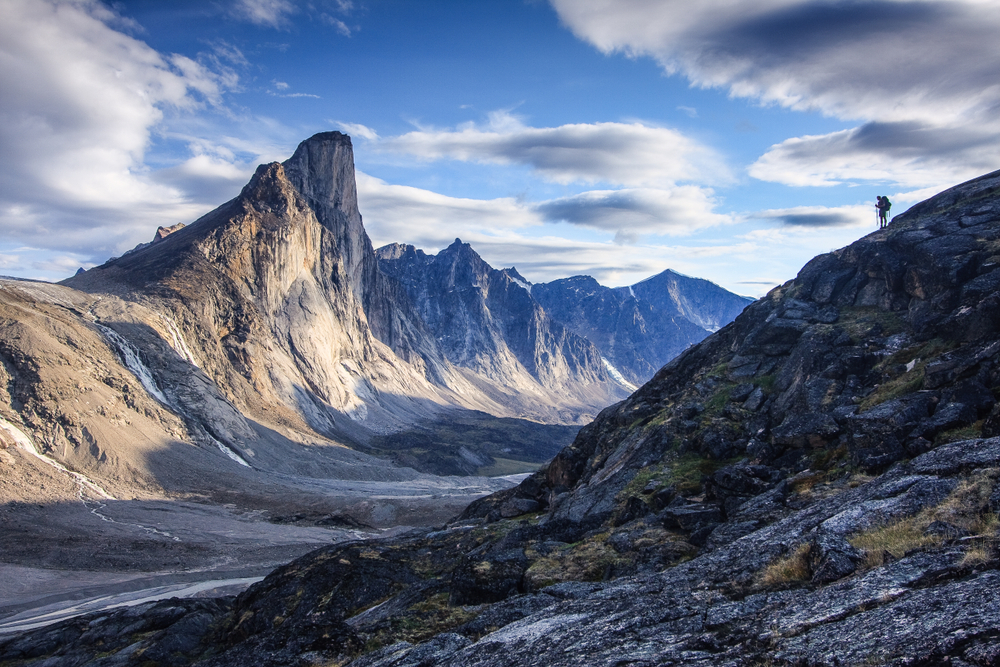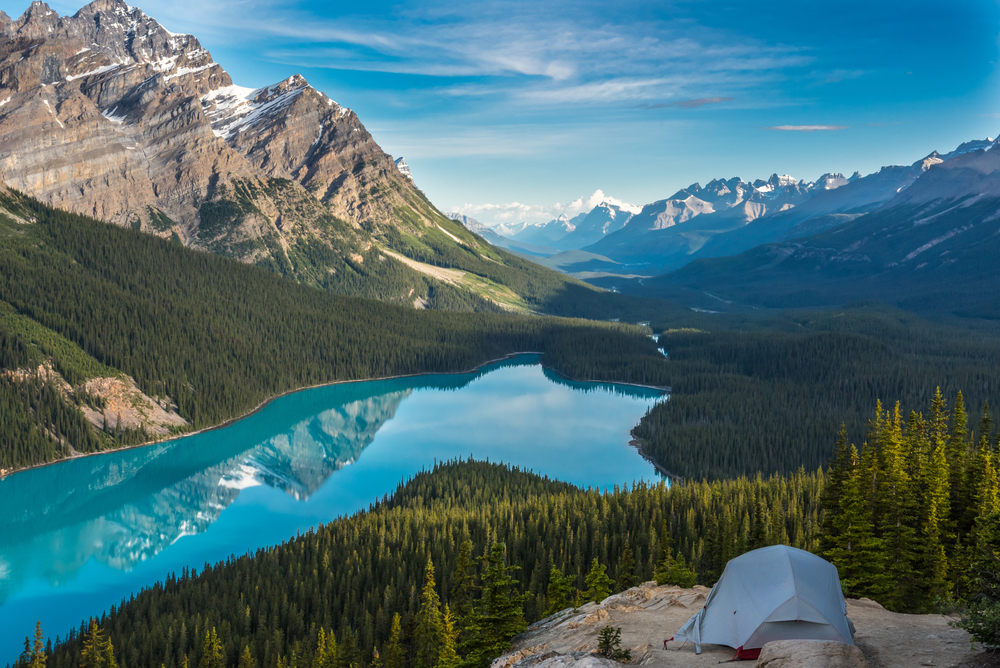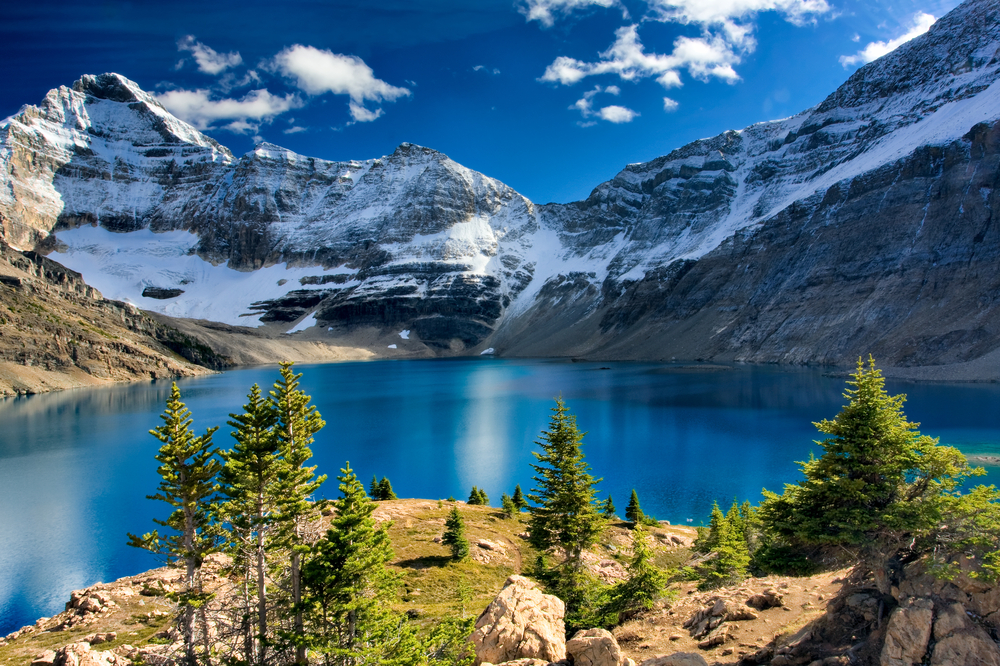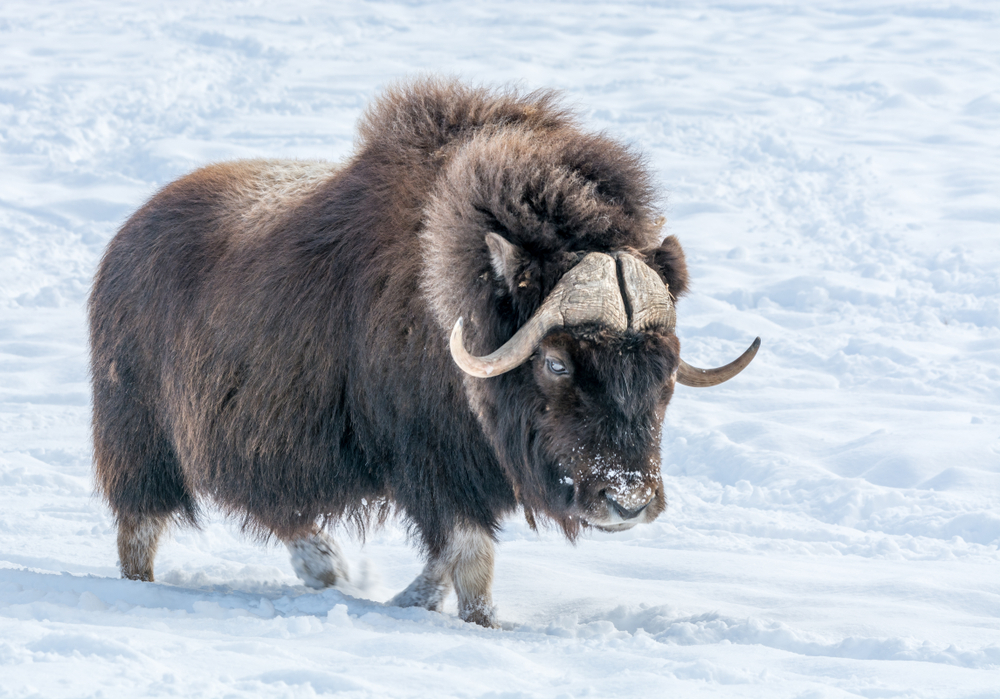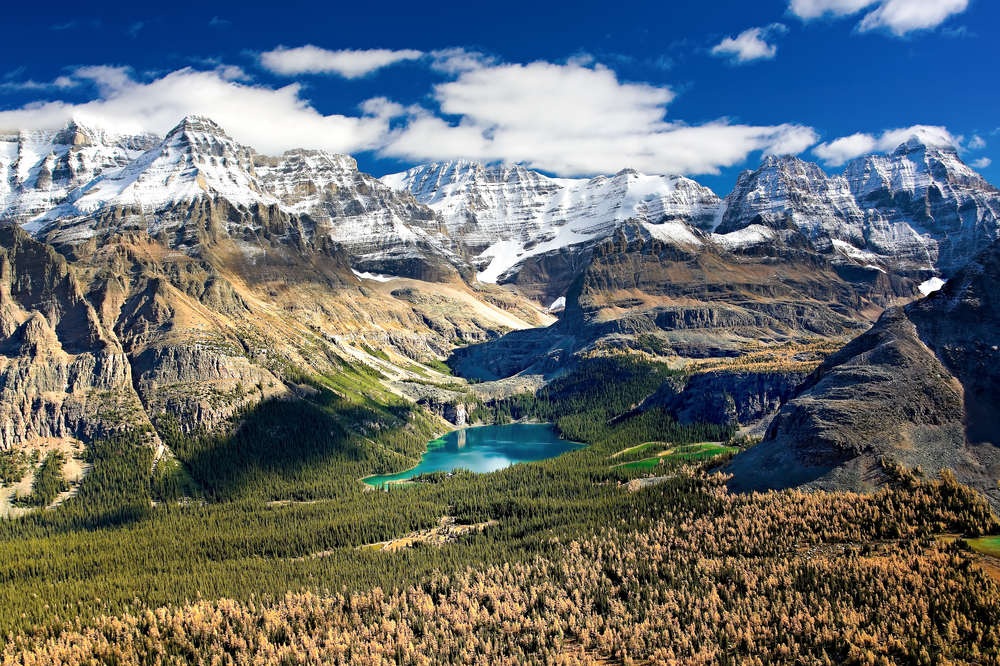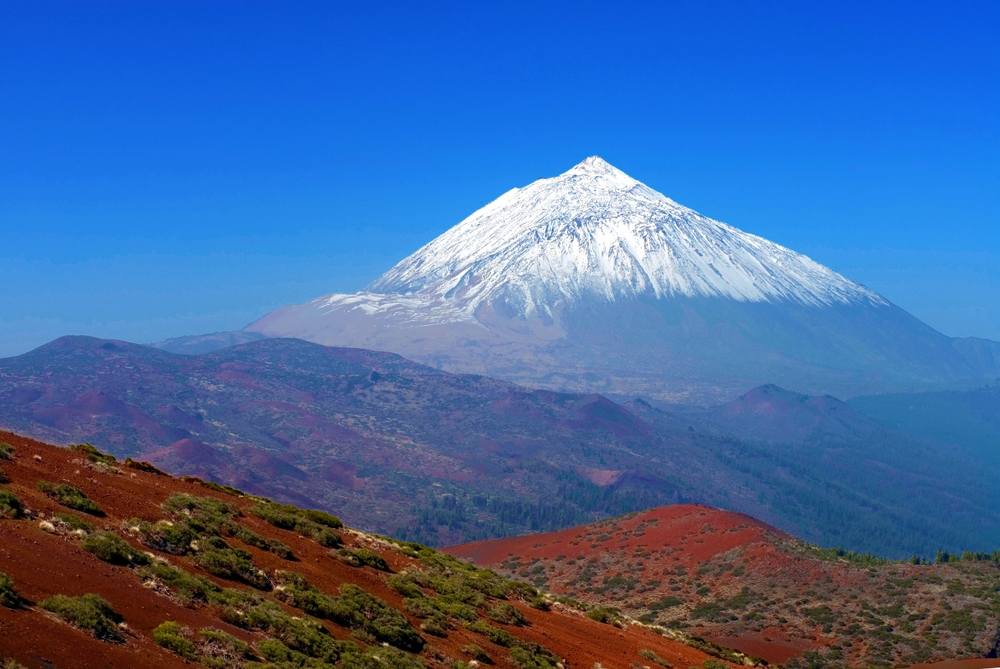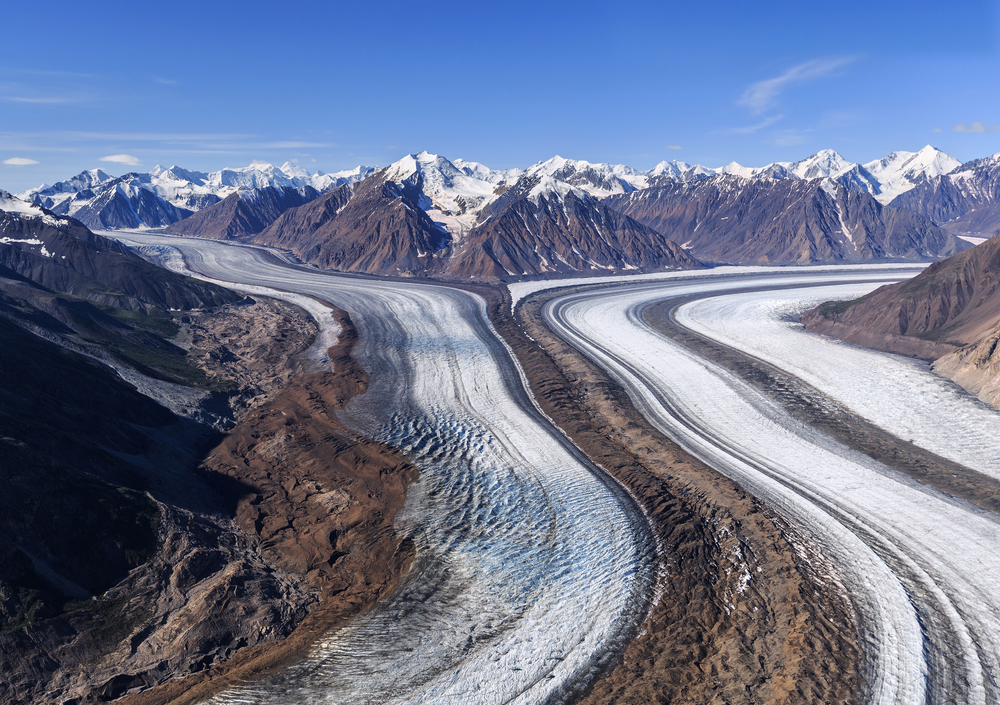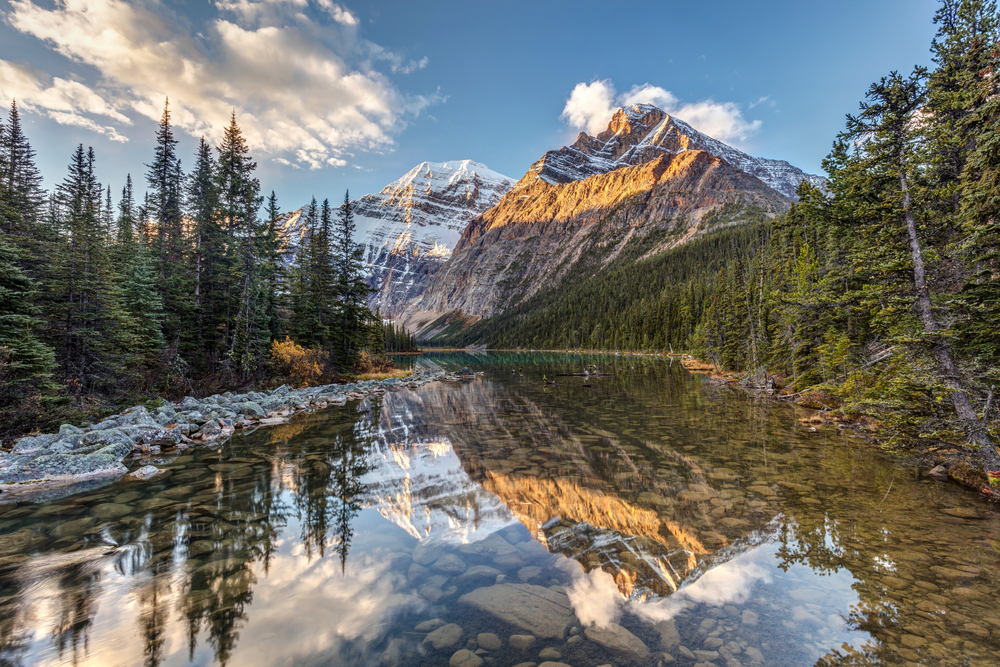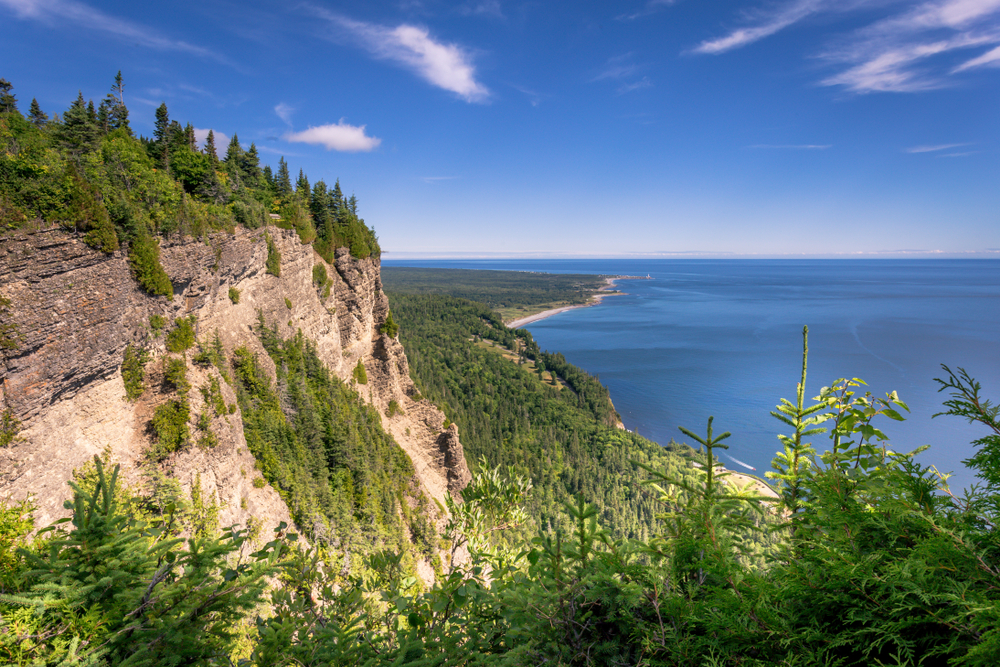Auyuittuq Overview
Auyuittuq National Park, known as “the land that never melts” in Inuktitut, is located on Baffin Island in the eastern Canadian Arctic within the territory of Nunavut.
Spanning approximately 8,290 square miles (21,470 square kilometers), the park protects a rugged and remote Arctic environment, home to dramatic landscapes shaped by glaciers and ancient geological forces. Towering peaks, sheer granite cliffs, and expansive ice fields define the terrain, making it one of Canada’s most striking wilderness areas.
The park is dominated by the Penny Ice Cap, a relic of the last Ice Age, which feeds many of the glaciers and rivers that carve through the fjords and valleys. Among the park’s most iconic features is Mount Thor, the world’s tallest vertical cliff, rising 4,101 feet (1,250 meters) with an almost sheer rock face. Nearby, Mount Asgard, with its twin cylindrical peaks, adds to the dramatic skyline.
The park also features Akshayuk Pass, a historic travel route used by the Inuit for generations, providing a stunning corridor between the fjords of Cumberland Sound and Pangnirtung.
The Arctic tundra dominates the vegetation, with sparse yet resilient plant life adapted to the extreme climate. Mosses, lichens, and hardy shrubs such as dwarf birch and Arctic willow cling to rocky outcroppings, while brief summer months bring an explosion of colorful wildflowers, including purple saxifrage and Arctic poppies.
Despite the harsh conditions, wildlife thrives within the park, with many species specially adapted to the cold. Among the most notable mammals are polar bears, which roam the coastal regions, and Arctic foxes, which blend into the snowy landscape with their seasonal fur changes. Caribou can be spotted moving across the tundra, while lemmings scurry through the low-lying vegetation.
Marine life is also abundant, with ringed seals and bearded seals inhabiting the icy waters, often pursued by formidable orcas and narwhals. The birdlife is equally remarkable, as the cliffs and shorelines provide nesting grounds for seabirds such as thick-billed murres, black-legged kittiwakes, and Arctic terns, which migrate thousands of miles between polar regions.
Auyuittuq National Park is a haven for adventurers, with some of the most challenging and rewarding trekking routes in the Arctic. The Akshayuk Pass trail, stretching over 60 miles (97 kilometers), is a favorite among hikers, offering breathtaking views of glaciers and towering cliffs.
Ski mountaineering and rock climbing are also popular, particularly among those looking to conquer the sheer rock faces of Mount Thor and Mount Asgard. For those venturing onto the water, guided kayaking excursions provide an unparalleled opportunity to explore the fjords and observe Arctic wildlife up close.
Winter visitors can experience the park through traditional Inuit travel methods, such as dog sledding or snowmobiling, which provide access to the frozen landscape under the mesmerizing northern lights.
Preserving the fragile Arctic environment presents significant conservation challenges. Climate change has accelerated glacial retreat, threatening the delicate balance of the ecosystem. Warming temperatures also impact wildlife, altering migration patterns and food availability.
Despite these challenges, Parks Canada and Inuit communities work together to implement conservation efforts, emphasizing Indigenous knowledge in park management. Sustainable tourism initiatives and strict environmental regulations help protect this pristine landscape while allowing visitors to experience its raw beauty.
Through collaboration with local Inuit organizations, Auyuittuq National Park continues to balance conservation with cultural and recreational engagement.








































































